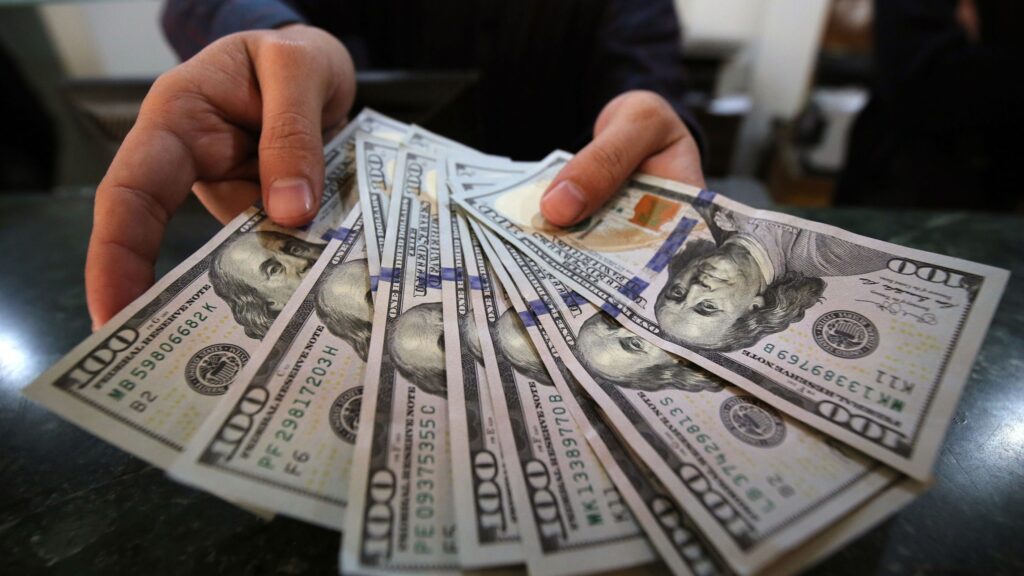(Reuters) – A sliding dollar came under more pressure on Thursday, as traders took surprisingly slow U.S. inflation as a signal U.S. interest rate rises will be all but finished by month’s end.
U.S. data on Wednesday showed inflation slowed a lot faster than expected last month. That gave rise to the biggest one-day dollar sell-off in five months and left the greenback at its lowest in over a year against the euro and sterling, and at its lowest in over eight years against the Swiss franc.
U.S. core inflation came in at 0.2% in June against market expectations for 0.3%. Headline annual CPI fell to 3% and has been dropping since hitting a peak at 9.6% a year earlier.
Interest rate futures showed markets have fully priced in another rate hike from the Federal Open Market Committee (FOMC) later this month, but expectations of any further increases have faded.
Whether or not the dollar is on a one-way trip lower over the rest of the year remains to be seen, according to City Index markets strategist Fiona Cincotta.
“A lot depends on what we hear from the FOMC in a couple of weeks – that will very much decide the fate of the U.S. dollar and set the tone for the rest of the summer,” she said.
“If there is any hint of dovishness in the Fed, then the dollar bears are going to jump on that and it will be an excuse to continue grinding the dollar lower,” she said, adding she was not convinced the Fed would signal that July’s would be the final rate hike.
As traders priced in an end to U.S. rate rises, the narrowing gap between U.S. borrowing rates and those elsewhere drove other currencies, particularly the euro, sterling and the yen higher against the dollar.
The euro headed for a sixth daily gain – its longest stretch of rises against the dollar this year. It was last up 0.3% at $1.155, having hit an earlier high of $1.11580.
IT’S EURO TIME
George Saravelos, Deutsche Bank (ETR:DBKGn) global co-head of FX research, said in a note on Wednesday that, following the inflation data, the time had come to buy the euro.
“(Wednesday’s) U.S. inflation print is the last piece of evidence we have been waiting for to recommend going long EUR/USD again. We target $1.15 which is our year-end forecast, but as we have argued previously we see a $1.15-1.20 range by the end of the year as entirely possible,” he said.
The euro hasn’t touched $1.20 since mid-2021.
Sterling rose 0.4% on the day to $1.30345, set for its sixth day of gains, having broken above $1.30 for the first time since April last year the previous day.
Data on Thursday showed Britain’s economy shrank by less than expected in May, reinforcing the idea the Bank of England can afford to raise interest rates further without derailing growth.
“Today’s figures were better than expected, but I don’t think they’re enough to get the champagne out yet,” City Index’s Cincotta said.
The yen, which has gained 4% in the last five days, strengthened by 0.12% against the dollar to 138.325, thanks in part to another drop in U.S. Treasury yields, which the dollar/yen currency pair tends to track closely.
The Swiss franc traded at its strongest level against the dollar since the Swiss National Bank removed the peg on the domestic currency in early 2015, leaving the dollar down 0.5% on the day at 0.863 per franc.
In Scandinavia, where inflation is looking sticky and central bankers are projecting further rate hikes, the Norwegian crown headed for its largest weekly gain versus the dollar this year, up nearly 5% at five-month highs, while the Swedish crown was set for a weekly gain of 4% and traded around two-month highs.
“We think the recent dollar underperformance reflects a qualitative shift in market comfort with being short dollars as the terminal Fed policy rate looks increasingly capped,” said currency analyst Steve Englander at Standard Chartered (OTC:SCBFF).



